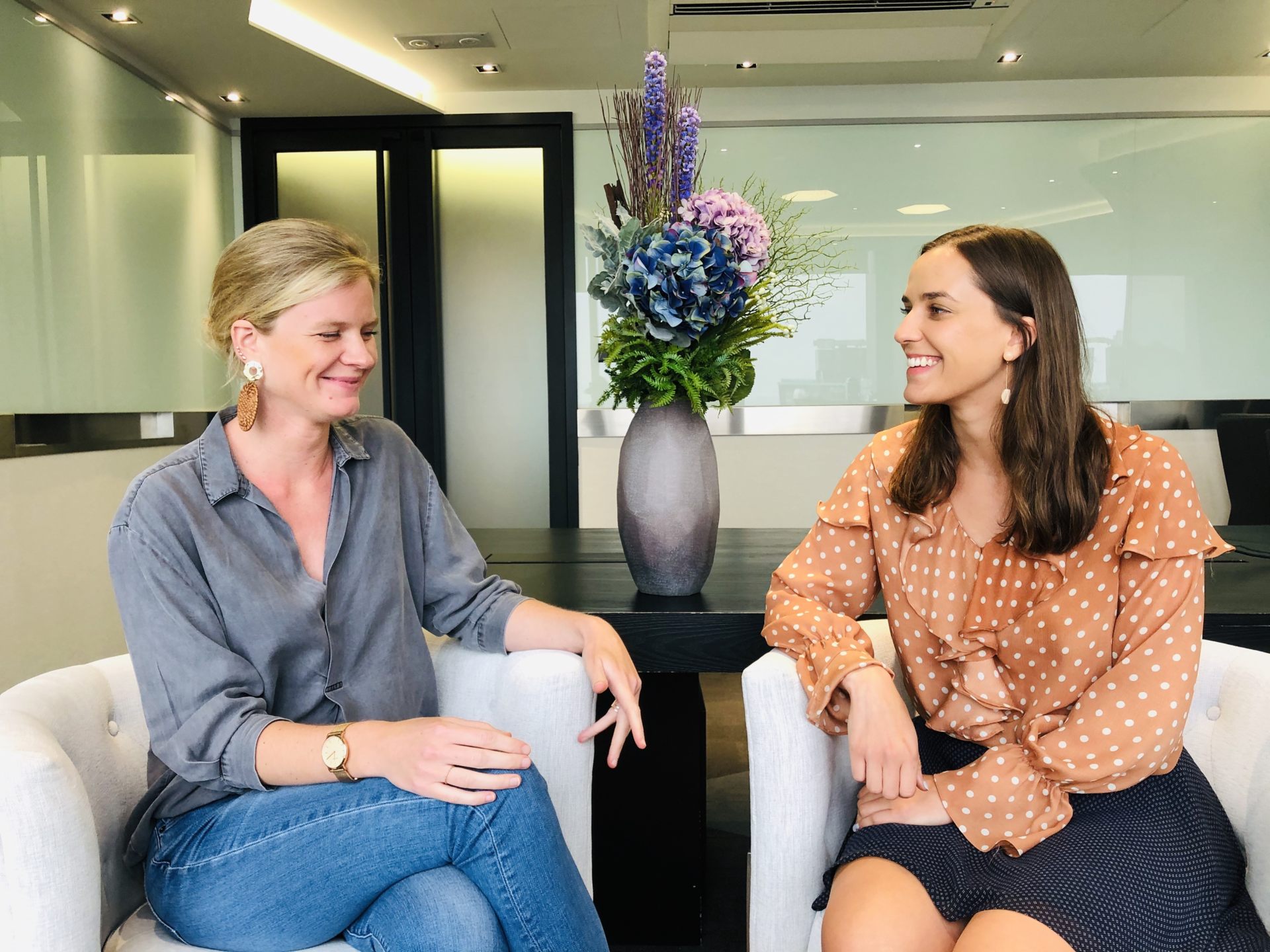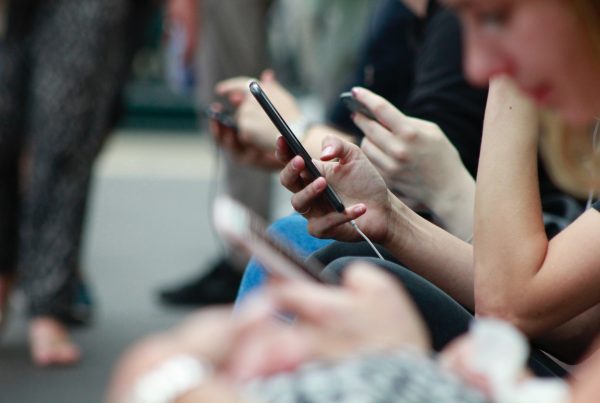Highlights
“When brands are looking at the long term, they need to think about the value that they’re adding to customers beyond the physical product or the service that they’re trying to provide: about how brands can build an ecosystem.”
Now more than ever, brands feel a sense of urgency to take action, to be able to navigate this time of uncertainty. Organisations will need to think carefully about how they must adapt to changing consumer behaviours in order to stay relevant while continuing to add value to their audiences.
In our brand new podcast, Digital Disrupted, IMS proposes a framework for building brand resilience to COVID-19 that hones in on core business and marketing principles. In the short-term, we recommend that brands leverage data insights through customer feedback and social listening to maintain an authentic tone of voice and create empathetic connection. Brands should also evaluate how they can genuinely reflect their values through a communications strategy that highlights brand purpose; to cater for evolving consumer expectations across customer service, priorities, and needs. Lastly, we suggest that brands examine how they can build a robust brand ecosystem that delivers value to customers beyond the transaction. In doing so, brands will be able to foster long-term loyalty, decrease customer acquisition costs, unlock new sources of revenue, and improve their value offering through personalised, immersive experiences
Episode Transcript
Manuela 0:13
You’re listening to Digital Disrupted from IMS, the podcast series that looks at how the next Digital Trends are impacting you.
Celeste 0:20
Most would agree that COVID-19 has created a sense of urgency for brands to initiate digital transformation.
Manuela 0:26
Today, we’re going to look at a framework for how any brand, whether a digitally native or a traditional business model, can leverage agility, purpose, and value generation to build a resilient business model.
Celeste 0:37
I’m Celeste, and I’m joined by Manuela and we lead the digital strategy at IMS.
Okay, let’s dive right in. Manuela, maybe you can set the scene with how COVID-19 is driving digital transformation.
The COVID-19 pandemic brought about uncertainties and a sense of urgency to brands.
Manuela 1:01
Yes absolutely. I think we are in a very interesting situation right now in the sense that we are facing uncertainty in a way that we never have before. And at the same time, marketers and other key decision-makers in a company still must make decisions for the future.
So what we want to do today is to propose a framework for brands to better prepare themselves for any eventuality and actually go beyond that to leverage opportunities that might arise from the uncertainty because they’ve adopted the right mindset to take advantage of it. So Celeste, maybe we could start with a look at the Hong Kong perspective, which hasn’t experienced a strict lockdown but has still been impacted by COVID-19.
Celeste 1:47
Yes, sure. And I think what’s really interesting also for us at IMS here in Hong Kong is that we manage brands across China, Hong Kong, the US and Europe, so we have really been able to witness differences in consumer behaviour and brands’ responses related to the pandemic.
If we start by talking about Hong Kong, one interesting thing that we have been seeing is the rise of ecommerce. For those who do not know, Hong Kong is a very dense city with a lot of malls and very easy transportation hubs. It’s a market characterized by low ecommerce penetration because it’s so easy to just step in a store and find whatever it is that you need without having to go online and face shipping fees or delivery delays that one usually encounters when buying online.
But with this pandemic, purchases of food, beverages, groceries, and supermarket website visits have experienced a huge spike. And what will be interesting to see once the pandemic has resided, is whether this trend goes on or if we go back to pre-COVID habits. Actually, I don’t know what your take is on that, what are your thoughts, Manuela?
Manuela 3:06
That’s such a great question, actually. Because what is so interesting is that Hong Kong has such a different landscape than China, which is very much an ecommerce market! As you’ve just described, most of the shopping and retail takes place offline in Hong Kong. I think it remains to be seen whether the trend continues.
Whatever we observe over the next few months, one thing for sure is that brands have been adapting their business models and have been focusing on how they can improve their digital services online. And a lot of this has translated into brands opening up their ecommerce options and improving their ecommerce offerings such as offering free shipping, click and collect, special promotions and more.
A significant evolution for consumer concerns post-COVID
Celeste 3:45
It’s no doubt we have seen a change in consumer habits. We’ll dive into the China market in a minute, but let’s look at the US quickly in terms of changing behaviors. A fun fact that we’ve seen is the shift of people choosing to use bicycles instead of public transportation.
As an example, looking at year-on-year change in bicycle sales in the US, leisure bikes have experienced a spike of 120% in sales, and that just goes to show how consumers crave solutions and brands can really leverage that as an opportunity. In terms of insights, are there any other things that we’ve seen with regards to Chinese consumers and their behavior?
Manuela 4:39
We can look at China for lessons learned from the crisis, given that they are further along than other markets. Before we do, I have to say I love that example of bicycles. It is so indicative of how consumers are trying to think through the problems that are being caused by the pandemic. If brands can come in and offer those solutions, they’ll be in a much better position to take advantage of opportunities arising from the current climate.
In China, consumer priorities and customer expectations have shifted. There has been a significant evolution for consumer concerns post-COVID when compared to 2019. As an example, last year, consumers were concerned about how they can juggle their competing priorities, whereas now we’re seeing a shift towards concerns such as health, security, and relationships. So that’s quite interesting because it’s kind of called into question all of the previous goals that Chinese consumers were working towards.
An accelerating trend toward natural, safe, or organic products in China
Celeste 5:48
With this heightened concern for health and wellness, are we seeing a trend toward natural, safe or organic products?
Manuela 6:01
Absolutely. One of the things that Chinese consumers are more concerned about now is how to make healthier food choices. For those listeners who aren’t aware, food safety is already quite a big concern in China. And COVID accelerated that trend.
As an example, there is a great platform out there called OrgHive that allows consumers to validate whether the product that they are trying to buy is truly certified organic or not. Brands that can offer those solutions and reassure customers on their purchasing decisions are going to be in a great position to retain customers and grow their share in the market.
Brand agility is key to navigating the uncertainty crisis
Celeste 6:37
Great. Going back to this framework, we mentioned the need for brands to become agile as a first step in navigating the crisis. Are there other examples that we’ve been seeing of brands being able to adopt agile methodologies in this situation? I’m thinking in terms of consumer support, for example, or using other means to talk to customers or to sell different products?
Manuela 6:57
Yes. I think a lot of brands are actually doing quite a good job in taking the data insights from social listening and using those to improve the marketing communications.
Celeste 7:04
I came across a sneaker brand, which is an organic sneaker brand, called Veja. And it’s so popular, right, especially at this moment. And one of the things that they were offering is international free shipping, which they don’t usually do. They also adopted a pro-active communication approach, informing customers that yes, you’re going to get free shipping on your international order but there will also be delays.
I thought that was pretty great because I think most consumers are understanding about these matters, so long as they are kept informed and not left wondering. The brand also showed concern and care for their employees. And I thought that was pretty great. I am definitely looking forward to receiving those sneakers soon!
Social Listening helps brands understand the changes in market trends and allows brands to better adopt agile practices
Manuela 8:16
Are you one of the customers that is affected by the delayed shipping?
Celeste 8:21
Yes, yes, I am, but it’s okay! You mentioned to me earlier today, that brands were getting more customer complaints online?
Manuela 8:36
The insight comes from Brandwatch, a social listening tool, that exposed that there has been a huge spike in conversations from consumers who call out brands for poor service, saying they won’t be ordering from them again. This is every brand’s nightmare! Especially on such a public platform, and especially at a time like this. About half of those complaints actually came from delivery delays.
So the example of this organic sneaker brand is so great because it really shows how brands can be proactive in solving consumer problems and managing expectations. Because, of course, we’re human, we understand that there might be delays in delivery, but we want to be kept informed about what’s happening with our orders.
Taking those steps to communicate on those fronts is what handling this crisis is all about. Navigating uncertainty through agility does not need to be crazily innovative; it can be just providing great solutions to customers that solve their pain points. Another great example is French apparel brand Sezane. They increased their customer service on WhatsApp and communicated closely to their audiences during COVID-19 in a way that was sensitive and authentic. It’s the simple things that, especially at a time like this, make a difference.
Celeste 9:43
All important tips relating to agility in the short-term and how brands react in the moment.
Manuela 9:52
I think one of the things that you mentioned for the French organic sneaker brand is the fact that that they communicated on how they were looking at their employees. This links back to how brands are perceived by consumers at a time like this. It’s a wake-up call for consumers to think more consciously about the choices they’re making.
Look at the news pieces of dolphins swimming back in the Venice canals: consumers are realizing that we all have such a huge impact on the environment and are evaluating how we can vote for the change that we want to see in the world with our wallets. You know, brands that look after their employees or communicate great on their sustainability policies. And that brings us to brand purpose.
Celeste 10:38
Would sustainability and authenticity be part of brand purpose? What else am I missing?
Manuela 10:50
I think you hit the nail on the head when you say authenticity, because I think consumers would be able to see right through a brand that just kind of talks about what they’re doing. Consumers want to see real change and real policies that make a difference. Patagonia is a great example of a brand that does this. They actively discourage customers from buying new clothes: when you’re a brand that sells new clothes, it’s kind of contradictory!
Then they created this platform for reselling used items, and linked all of the communications on that back to their purpose of protecting nature in the environment. And I think that’s such a great example of a brand that’s really faithful to its values.
How can small businesses thrive post-COVID?
Celeste:
What about smaller businesses that may not have the influence or the size in terms of marketing teams of brands such as Patagonia, what can they do?
Manuela:
I think it’s trying to think about the small ways that they can communicate with consumers on that level, so what are the small steps that a brand does to reduce their carbon footprint or reduce the amount of plastic that they use in their recycling? I mean, if you think about what you know we as consumers expect from brands, small brands might even be in an advantage here because they are able to make decisions quicker. It still must be authentic. It cannot just be a marketing gimmick.
Celeste 12:36
As a customer, I feel that when I buy things, I buy into an idea behind it. You were mentioning purpose earlier, if you are buying something a bit expensive, for example, then you look at brand purpose – but what about everyday things that we buy like coffee or your MTR ticket when you get on the metro?
I think as consumers, we are going to question more and more brands and why they are not doing certain things that seem simple. What about paper subway tickets? Or paper masks which are good for reducing the risk of passing on COVID, but not so great for the environment. I do think that as consumers we are going to try start pushing back and questioning why we are buying this product and whether an alternative would also suit my needs.
Manuela 14:04
I think that’s such a great point. And I think there’s a lot of opportunities for smaller brands to be able to fill the gap where big brands are not able to do so.
Going back to the social listening insights, we’ve seen consumers demand more from brands on the sustainability front. And I think what you’re saying is absolutely correct: we’ll see more and more how brands will be able to problem-solve for consumers looking for these better solutions. So looking at short and medium term strategies for managing uncertainty, what would you say Celeste are the key takeaways for brands?
Ensure authenticity in communications – no marketing gimmicks
Celeste 14:47
We can summarize the key takeaways in a simple do’s and don’ts checklist for brands.
A big one on the ‘don’t’ list would be ensuring authenticity in communications, no marketing gimmicks. This is a time where the message has to be in line with what you’re selling. But at the same time, this is not a time to hard sell, brands do not want to be perceived by consumers as being opportunistic which can backfire.
Look at the example of McDonald’s in the US not providing health care or mask supplies in enough quantities for employees to feel safe going to work. Consumers have more time on their hands during lockdown measures, so they’re also over scrutinizing what brands are doing. Things such as paying your suppliers or creating a safe work environment is really something consumers are going to be looking at.
In Hong Kong, for example, most physical shops impose the obligation to wear your mask, but also conduct temperature checks and offer visitors hand sanitizer. These are small measures, but, meaningful measures for both employees and consumers to feel safe in this environment.
In terms of what a brand should do, they should focus on adding value to consumers and improving their customer service. This is really a time to be honest, transparent and to come off as genuine. Having those two categories and being really careful as to how your messages are coming across is really going to be key.
Manuela 16:54
I think that’s so important, especially as brands look to build future relationships with customers. Brands shouldn’t go for the hard sale but should focus on building relationships with customers and engaging customers in conversations that make sure that they’re top of mind for the eventual rebound.
Celeste 17:16
That leads us to the last step in our framework, which relates more to long-term brand building.
The new normal of long-term brand building is ecosystem-driven growth
Manuela 17:34
When brands are looking at the long term, they need to think about the value that they’re adding to customers beyond the physical product or the service that they’re trying to provide: about how brands can build an ecosystem. An ecosystem brand goes beyond selling a product to integrate touchpoints in one seamless experience where they have a holistic view of the customer.
A great example of what is not a brand ecosystem is EasyJet: they fly their planes, they have their hotels, they have their offices – apparently they even have something called easy pizza! But that doesn’t mean that it’s an ecosystem brand; it just means that they’re selling different products and services. A real brand ecosystem is one where all of these services complement each other and fit together to continue adding value to the customer.
One brand that has done it right is a high-end gym that originated from New York called Equinox. It’s a great example of how brands can build ecosystems, even when their core service is not digital. You don’t have to be a digitally native brand to build a brand ecosystem. Equinox opened up a series of gyms at first, but they also opened up a series of hotels and clothing lines, and they started operating spas.
Their real turning point was when they launched their online media magazine and mobile app. A few months before COVID, before the lockdown, they also launched a digital venture that would enable them to reach customers who don’t live near their gyms by giving them digital access only to personalized classes with the world’s best instructors. They essentially moved their core offering to an online version as well for acquiring new customers. It’s just a great example of how brands have changed their acquisition strategy and think outside the box and expand on their activities.
Celeste 19:46
It reminds me of Nike. They are known for selling shoes and sportswear, but they have also built several training apps.
Manuela 19.57
Which are great! I use them.
Celeste 20:03
They’ve seen a huge increase of people subscribing to the Nike app, providing a lot of exercises from home for free. You don’t need to buy their sports shoes to interact with the brand, and they’ll be top of mind to all their app users when we do emerge from COVID.
Manuela
Nike is such a great example because of the communities they’ve built around those apps. And communities are really cool to a brand ecosystem because that’s what allows brands to generate word-of-mouth and to generate these great interactions between customers.
And of course for all these interactions, brands can collect data on the backend. When you build a brand ecosystem, typically you’re expanding your touchpoints, which allows you to collect more data and allows you to deliver personalization. This helps brands to build long term brand loyalty by engaging the customer in new and exciting ways.
Celeste 21:19
Agreed. That brings me back to this book I’m reading, which is the story of Innovation and Customer Choice by Clayton Christensen, from Harvard. One of his key points is that brands who can successfully innovate are those that can solve jobs, i.e. solving problems people have.
Let’s take the examples of Nike’s fitness app and the gym: examine the reality your business is in and what else can be done. Customers are looking for different ways to solve their problems. With Equinox, the problem is how customers can exercise with great trainers if the gym isn’t close by. Consumers currently aren’t allowed to go outside, but they can still train with best-in-class trainers through the app. This is how brands can stay relevant and come out on top.
Manuela 22:11
That’s so interesting, because it prompts brands to think of themselves as problem solvers first, and storytellers second, which helps shift the focus on the customer. That’s exactly what we are trying to do with this framework.
We’re trying to think about how brands can create better value for their customers in the short and long term. That’s a nice way to end the conversation about brand ecosystems. Let me recap. Through this framework we’re really looking at mechanisms that brands can adopt in the short and long term to be able to build up a resilient business model.
In the short term, it’s all about how brands can respond to data to consumer insights to be agile in the way that they adapt their marketing communications. At the same time, this current climate is the perfect opportunity for brands to rethink their purpose in a way that’s genuine and authentic. So, it’s not just about bragging about what they’re doing, but it’s walking the walk and ‘showing not telling’ the consumer.
Lastly, we’ve talked about how brands can expand their value offering beyond the product or service, to build up a brand ecosystem that allows them to collect data in order to deliver fantastic experiences for the customer.
Celeste 23:27
To add, something important to note is that we’re not inventing something new, or asking brands to think of actions that are totally out of the blue, but that these times of turmoil are really a wake up call for brands to think about how they’re adding values for customers, which is the end goal. It’s the opportune time to re-evaluate the strategies that brands have in place to come out on top and stay relevant in the long term.
This week’s podcast was brought to you by Property Raptor. The latest all-in-one estate CRM software empowering real estate agents to go from good to great. Hope you enjoyed it and we are doing our best to make it one of your favorite podcasts.
Manuela 24:18
Property Raptor is designed to turbocharge your sales deals like never before. With multiple cutting-edge features such as efficient lead management workflows, advanced AI client property matching and seamless email integration, realtors can target, nurture and convert prospects all on a single platform.
Celeste 24:35
Maximize productivity and reimagine the way you sell real estate. Great for agents. Loved by clients. Visit their website at www.propertyraptor.com for more information.
Thank you to our listeners for tuning into this first episode of digital disrupted. To learn more about this research and other related topics, you can check out our insights page.











